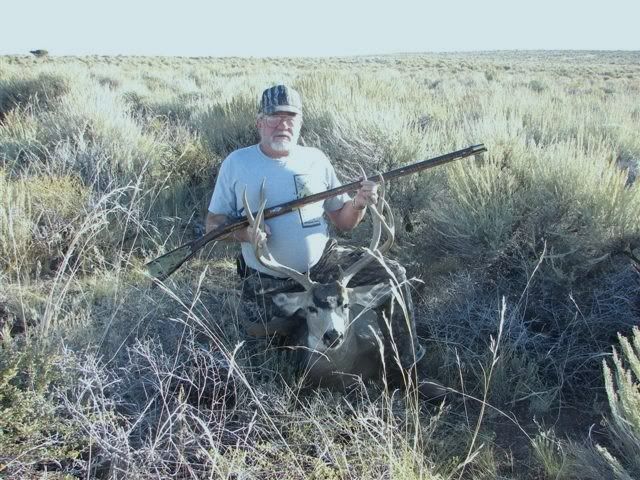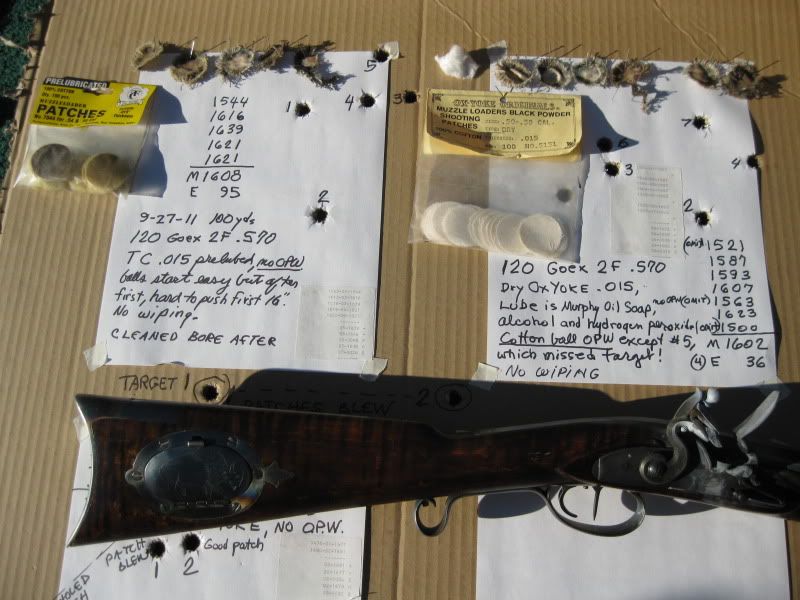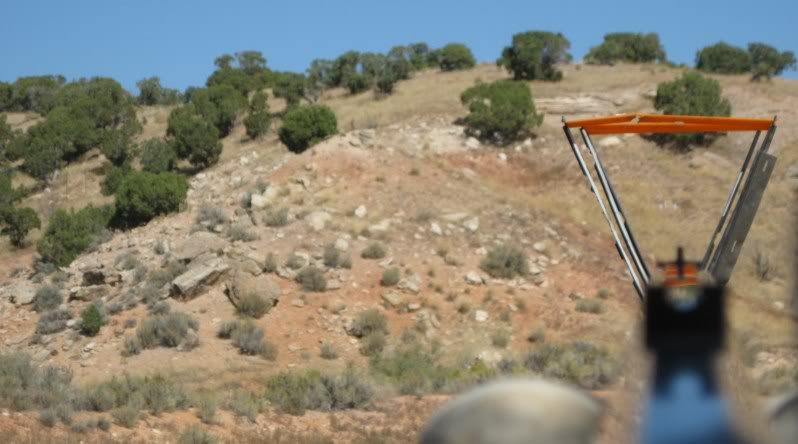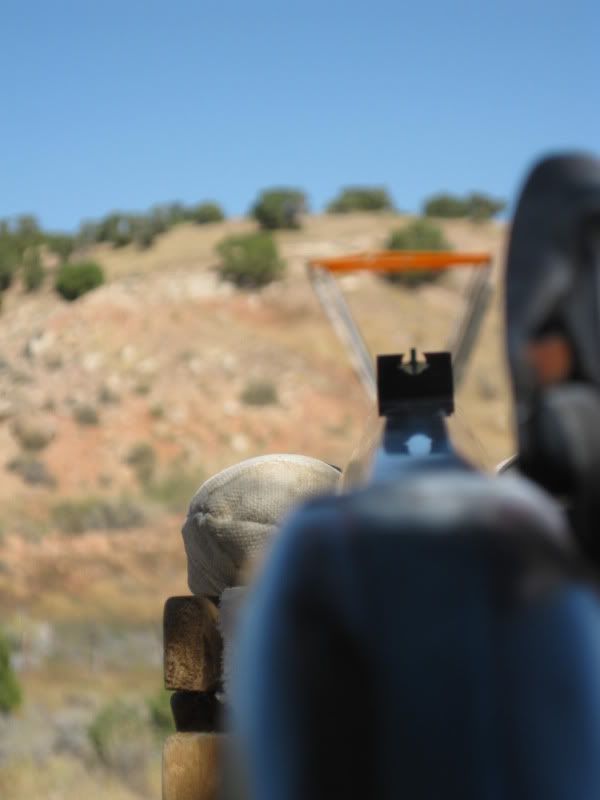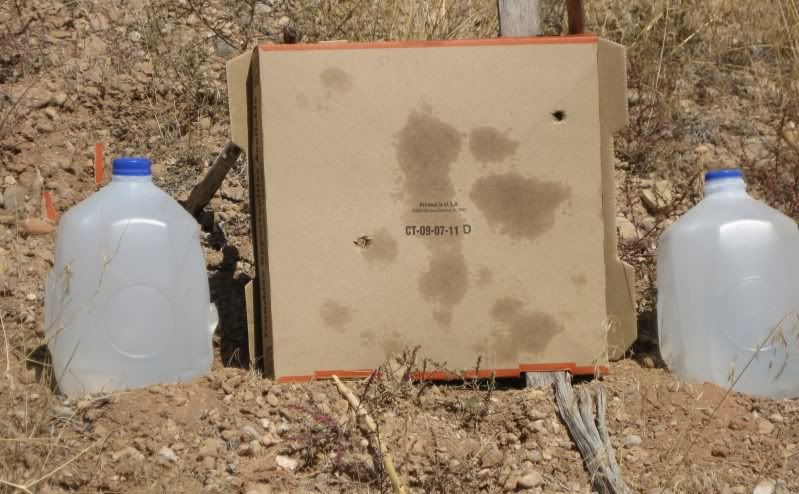tg said:
"What you call a Texas heart shot should not be condemned as unethical."
I think that would be a matter of individual choice same as a running away shot at 400 yds, one cannot argue that the percentages of problems raise with such shots the disagreement is when the percentage raises to the point of being unacceptable, there are shos like this that I persoanbly would not add to a list of acceptable shot when bringing up a new hunter, and there is absoluitely no comparison twixt the damage a high powered bullet form a centerfire can do from any angle it that of a PRB, one may find a bad angle develope if the animal moves when shooting but to start off with that sight picture? what does one have if the animal moves then? I am surprised that this type of thing is even mentioned as an option here, let alone a good humane one, just my opinion based on what I would consider common sense and no pressure to HAVE to take a shot at every animal that is remoteley within range of hitting...somewhere, a survey pole would be interesting on this one to see where the general ML hunting public is on shot placement with PRB, one might get a cross section of sort from traditional hunters here.
Here is what Bob Hagel wrote in the September-October 1981 Number 77 of Rifle Magazine, "The Misunderstood Rump Shot": "Much verbal flak has peppered the pages of hunting and firearms publications regarding the use of the so-called rump shot on big game animals, especially on heavy game like elk and moose. Many hunters grind their teeth, feign nausea, and develop convulsive tremors at the thought of deliberately placing a bullet near the root of the tail of any animal-or so they would have us believe. They label a hit in that area as totally ineffective, a spoiler of huge amounts of choice meat, and a shot that allows great numbers of animals to run off into the brush to die slowly with little chance of recovery. I can understand and sympathize with their thinking because of their lack of knowledge of how effective it really is if executed correctly with the right cartridges and bullets. But it is also obvious that these hunters have never hunted heavy game in places where this shot may be the only one presented day after weary day of crawling around through the logs and brush trying to even see the animals that they know are there.
"But let's take a serious look at the rump shot, which is actually a misnomer, and see how it works, when it should be attempted, how effective it really is on heavy game, and what it takes to do the job efficiently.
"To start with, the term rump shot more or less implies that the shot is fired from directly behind and is aimed at the center of "the seat of his pants." This is not what a proper tail-ender shot is and should not be done except when a heavy, big-bore bullet of controlled expansion can be slanted upward so that the spine will be broken forward of the hips.
"The whole purpose of placing a bullet in the pelvis-spine area is to immobilize the animal completely. To be fully effective, the shot should be attempted only at close range, where the bullet can be placed exactly where it must go. You don't drop an animal by landing the bullet in the ham; you have to break up the rear of the spinal column. A second reason for being close is that the animal will not die as quickly as it would from a lung-heart shot, and you should be close enough to put in a finishing shot within a few seconds. Not that he is going anywhere, but he should be dispatched before he comes out of the initial shock and starts to suffer....
"While every attempt possible should be made to kill an animal instantly, it seldom happens that way with any bullet placement. Game shot in the heart or lungs often travel more than a hundred yards. And while the shoulder shot is advocated by most experienced hunters, the bullet that drives in from the side and passes forward of the lungs is usually a slow killer and requires a finishing shot. The often highly touted neck and head shots are not necessarily sure and quick killers, and if the neck bone is not smashed or the brain penetrated, the animal can live for days. This brings out the point that because the rump shot is not instantly fatal, does not mean it is not effective, or that the animal will live any longer than with the bullet placed in other areas.
"As to when and why it should be used, the answer is only when conditions prevent placing the bullet in a more instantly vital area such as the heart or lungs. Elk in many areas live in heavy timber most of the year, and in others are driven in as soon as the hunting season opens. Moose are also hunted in some pretty thick stuff in many areas. When you have to go into the big trees, down logs, and thick brush, the game usually knows you are there and is normally moving away from you. It follows that what you see most of is his fanny, and often only small parts of that. If you do see some of the body, it is hard to know what part, and a shot thought to be headed for the lungs that lands in the paunch is not nearly as effective as one that breaks the spine from the rear and lets him down where he stands. If the right shot at his hunkus presents itself and you don't take it, there very likely will not be another chance. After a week or so of this, few hunters resist shooting at whatever part shows up, so they would have done much better to place a bullet carefully in the rear of the spine when the chance was offered....
"If properly executed, the rump shot is extremely effective on heavy animals. And before you scream and condemn those who use it when conditions warrant, consider how many whitetail deer would ever be killed if no hunter fired at the north end of a south-bound buck! This doesn't mean that I advocate the rump shot for everyone under all conditions but every hunter should know how to do it and why it is necessary under certain circumstances."
Hagel is writing about centerfire rifle hunting, but a .54 or .58 lead roundball weighing 220 to 270 grains at hunting load velocity can do as well as any of the loads he wrote about. This is why I want what Roundball calls "whompability"- not just for flatter trajectory to reasonable hunting ranges, but for what the ball can do once it gets there.




